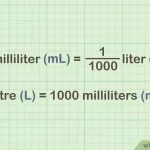What Do Termites Look Like?
Termites are small, soft-bodied insects that are often mistaken for ants due to their similar appearance. However, they are distinct in their behavior, diet, and physical characteristics. Understanding what termites look like can help in identifying and controlling these pests effectively.
Physical Characteristics
Termites are small insects that can range in size from 1/8 inch to 1/2 inch (3 to 13 mm) in length. They have a soft, pale-colored body with a distinctive shape and features. Here are some key physical characteristics of termites:
Body Shape
Termites have a long, slender body with a segmented abdomen. Their body is typically cylindrical in shape, with a distinct head and thorax.
Color
Termites are usually pale in color, ranging from white to yellowish-brown. This coloration helps them blend in with their surroundings, making them difficult to spot.
Antennae
Termites have long, thin antennae that are often longer than their body. These antennae are used to detect chemicals, vibrations, and other environmental cues.
Eyes
Termites have compound eyes, which are made up of many small lenses. These eyes help them detect light and dark areas.
Wings
Some termite species have wings, which are used for reproduction and dispersal. These wings are typically clear or translucent and are shed after mating.
Legs
Termites have six legs, which are used for movement and support. Their legs are long and slender, allowing them to move quickly and efficiently.
Types of Termites
There are several species of termites, each with its own unique characteristics. Here are some common types of termites:
Subterranean Termites
- These termites are the most common and destructive type. They live underground and build complex networks of tunnels to access food sources.
- They are typically pale in color and have a long, slender body.
Drywood Termites
- These termites live in dry wood and do not require contact with soil. They are often found in furniture, buildings, and other dry environments.
- They are typically darker in color and have a more rounded body shape.
Dampwood Termites
- These termites prefer moist wood and are often found in areas with high humidity.
- They are typically darker in color and have a more elongated body shape.
Termite Identification
Identifying termites can be challenging, especially for those who are not familiar with their physical characteristics. Here are some tips to help you identify termites:
Look for Wings
- If you see small, clear wings near a termite infestation, it is likely a reproductive termite.
Check for Mud Tubes
- Subterranean termites build mud tubes to access food sources. These tubes are often found near the foundation of buildings.
Inspect Wood
- Drywood and dampwood termites can be found in wood, so inspect wood structures for signs of infestation.
Use Magnification
- A magnifying glass or a microscope can help you get a closer look at the termites and their physical characteristics.
FAQ
Q: What do termites look like?Termites are small, soft-bodied insects with a long, slender body. They are typically pale in color and have long antennae and six legs.
Q: How do I identify termites?To identify termites, look for wings, mud tubes, and signs of wood damage. Use magnification to get a closer look at the termites and their physical characteristics.
Q: What are the different types of termites?There are several types of termites, including subterranean, drywood, and dampwood termites. Each type has its own unique characteristics and preferred environment.
Q: How do I prevent termite infestations?To prevent termite infestations, ensure that your home is well-maintained and free of moisture. Regularly inspect wood structures and use termite-resistant materials.
Q: How do I treat a termite infestation?If you suspect a termite infestation, contact a professional pest control service. They will assess the situation and recommend the best course of treatment.For a more detailed look at the physical characteristics of termites, you can refer to this Wikipedia article on termites.
Additional Tips
- Inspect Regularly: Regularly inspect your home for signs of termite infestation, such as mud tubes or wood damage.
- Use Termite-Resistant Materials: Use termite-resistant materials when building or renovating your home.
- Maintain Your Home: Ensure that your home is well-maintained and free of moisture to prevent termite infestations.
- Contact Professionals: If you suspect a termite infestation, contact a professional pest control service for assessment and treatment.
By understanding what termites look like and how to identify them, you can take proactive steps to prevent and control these pests effectively.


